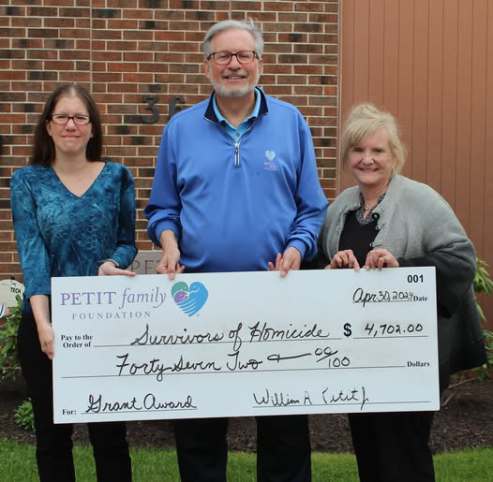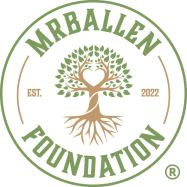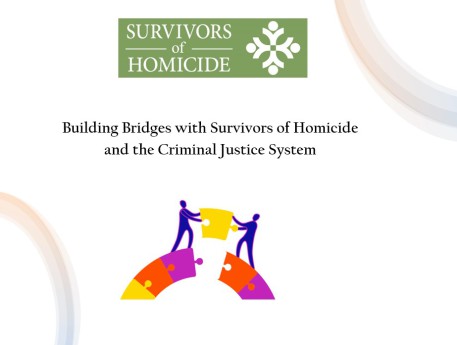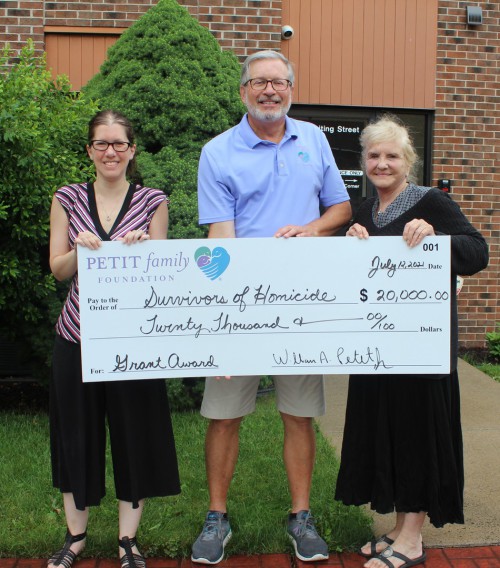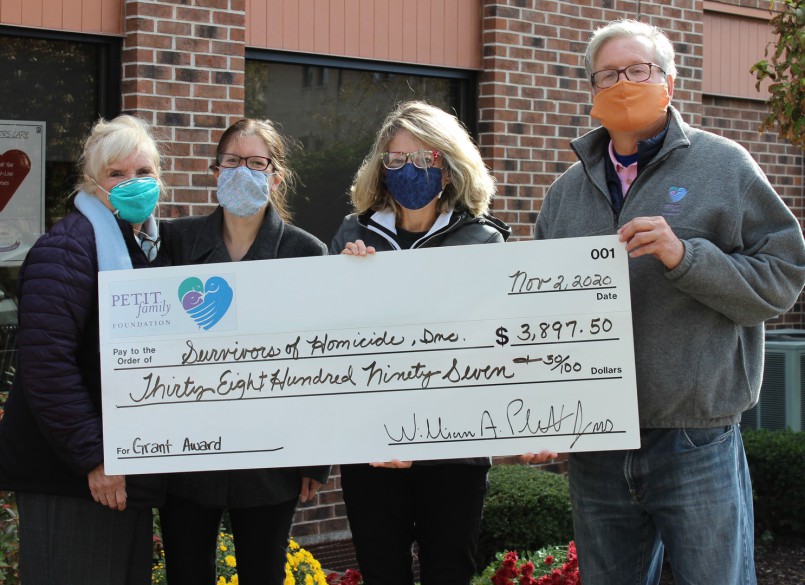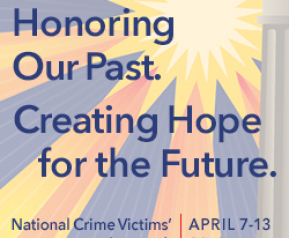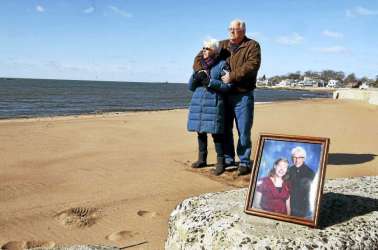

Survivors of Homicide in the Community
Families of homicide victims remember loved ones in Hartford
Families of lost loved ones gather in Hartford for Survivors of Homicide Day
By: Bridgette Bjorlo
HARTFORD, Conn. — Families who lost loved ones to gun violence gathered in Hartford
Wednesday for the second annual commemoration of Survivors of Homicide Day.
It is intended to respect, honor and show comfort for those who had someone in their family murdered.
“There's very few people who will understand you better than anyone else,” Audrey Carlson said. “Survivors of Homicide are the folks that basically walked us through the criminal justice system, held our hand, let us know we would never be alone. And continue to be. They’re the people that we need pretty much for always.”
The group recommended legislation as they work to prevent such tragedies in the future.
As many get ready to celebrate the holidays, empty seats at the dinner table remind others of what they live without.
“Holidays in the winter are very hard for these folks and it's up to us to support them as they need help to recover from this loss,” State Rep. Mary Mushinski said.
CT domestic violence services preparing for layoffs, budget cuts due to federal funding cuts: 'We're terrified'
By: Abby Weiss-CT Insider
Survivors of Homicide — a nonprofit organization in Wethersfield with two full-time staff members — has operated in Connecticut since 1983. But due to impending funding cuts, it could shut down as early as next summer, the director of victim services Jessica Pizzano said.
The organization provides counseling, support groups, court accompaniments and other services to loved ones of homicide victims. Its client base has increased since the pandemic, with more than 500 people served over the last year, Pizzano said. But, the chances of having the necessary budget to maintain those services are looking slim.
“I’ll be honest, we’re terrified,” she said.
Connecticut crime victim services
brace for “catastrophic” federal funding cuts
By: Mark Fitch-Inside Investigator
Connecticut nonprofit organizations that provide counseling, advocacy, and legal support to victims of crime are bracing for a 60 to 80 percent reduction in federal funds that, combined with the
end of American Rescue Plan dollars, will force them to end victim service programs or possibly even close completely.
Jennifer Pizzano, director of victim services for Survivors of Homicide — a small
nonprofit that provides support, counseling, and advocacy to friends and families of homicide victims – says her small organization receives most of its money through a federal fund established under
the Victims of Crime Act (VOCA), and they will be forced to close their doors completely unless they get additional financial support.
“We’ll shut down,” Pizzano said. “We’re very small, there’s only myself and my victim advocate, and we provide services throughout the state of Connecticut. An 80 percent cut will shut us down, there’s no other way around it. We’ve faced cuts in the past, we’ve been able to dig in with some fundraising, and getting some community grants, but there’s no way to fix this if it’s 60 to 80 percent.”
2024 Petit Family Foundation Grant Recipient
2023 Survivors of Homicide Awareness Month Press Conference
<< New text box >>
We are proud to announce our partnership with the Mr. Ballen Foundation. The foundation recently chose Survivors of Homicide Inc. to receive a generous grant to help us fund our Survivor Court
Meal Program.
We are grateful for their support and mission of honoring victims and supporting families of heinous crimes through education, training, and financial support.
CT-N On Demand Video:
http://ct-n.com/ctnplayer.asp?odID=21104
Three decades ago, Bridgeport consistently led the state in the number of homicides per year. In 1990, the number of Bridgeport homicides peaked at 62 deaths, a state record and more than double the city’s historic rate.
These days, there are less than half that number of murders each year and Hartford now leads the state in the numbers reported there annually.
But the number of homicides in Bridgeport, Hartford and New Haven has remained consistent over the last decade, raising questions about whether policing and social programs — and the hundreds of millions of dollars spent on them — are making a difference.
Since 2011, Bridgeport averaged roughly 17 homicides per year while Hartford since 2015 averaged 25 homicides and New Haven 14 homicides, according to data obtained from the state Office of the Chief Medical Examiner.
And the victims are chillingly similar in each city — mostly Black males ranging from teenagers to adults in their 30s. Women are rarely killed in the three cities, the data shows.
As Murders Spiked, Police Solved About Half in 2020
By Weihua Li and Jamiles Lartey
The U.S. homicide clearance rate is at a historic low. Here’s what that means.
For homicide detectives, 2020 brought good news and bad news. On the one hand, police across the nation solved more murders — in absolute numbers — than in any year since 1997, according to data
reported to the FBI. On the other hand, because new homicides increased sharply, the reported rate at which killings were solved, known as the “clearance rate,” declined to a little below 50%.
The lower clearance rate in 2020 was an extension of a long, steady drop since the early 1980s, when police cleared about 70% of all homicides, and a decline that experts say was exacerbated by the pandemic. (The FBI won’t release 2021 numbers until later this year.)
In most cases, clearing a crime means at least one suspect was arrested and charged with the crime. However, individual agencies have different ways of calculating clearance, with some clearing a
case once police identify a suspect, and others if an arrest is made.
At the national level, the FBI uses blunt math to calculate a clearance rate, dividing the number of crimes that were cleared — no matter which year the crime occurred — by the number of new crimes in the calendar year. By clearing old and new cases, a department’s rate in any given year could exceed 100%. This leaves the numbers prone to statistical “noise,” but they can be useful for examining trends over the long term.
Survivors of Homicide Inc. is an advocacy group that stands up for those left behind
Jessica Pizzano and Su Hintz know that when someone loses a loved one to murder, that trauma will be a part of their life forever. Pizzano is director of victim services and Hintz is a victim advocate at Survivors of Homicide Inc., a Wethersfield-based nonprofit that advocates on behalf of the families of violent crimes.
“We are the only organization in the state that specifically works with secondary survivors of homicide and one of a handful in the entire country,” Pizzano says. They run support groups and offer
one-on-one counseling. “We do home visits. I’ll go sit with people in their houses, in a restaurant, wherever they feel most comfortable. We could just talk about anything, about their loss, or just
about things that are going on in their life.”
They also help guide victims’ families through the legal proceedings that often follow a murder, going with them to court dates and helping them understand and navigate the long investigative and legal process. “They hear things on the street in their neighborhoods and they get frustrated and [wonder] why aren’t the police doing something,” says Hintz, noting that she and Pizzano can help explain to family members that police can’t reveal details of a case because there might be safety issues and they don’t want to tip their hand and allow evidence to be destroyed. Explaining that building a strong case takes time, Hintz has a standard phrase she repeats to family members: “[police] don’t just want to indict, they want to convict.”
Survivors of Homicide was founded in 1983 by a small group of families that had themselves lost a loved one to murder. Pizzano and Hintz work across Connecticut, though most of their efforts are now remote because of the coronavirus. They say that the pain never goes away for their clients, but neither do they. “We don’t use words like ‘closure’ here, things don’t necessarily get better, things get different, so we work with people who could have just experienced a loss, but we also have people in our membership that have been with us from the beginning,” Pizzano says.
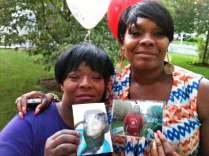 Rickita Smalls, 22, a 2007 graduate of Bassick High School in Bridgeport who worked in the bakery at Stop & Shop in Westport, and Iroquois Alston, 27, who had attended Westhill High School in Stamford, were in a car on Aug. 6, 2011, when they were killed
Rickita Smalls, 22, a 2007 graduate of Bassick High School in Bridgeport who worked in the bakery at Stop & Shop in Westport, and Iroquois Alston, 27, who had attended Westhill High School in Stamford, were in a car on Aug. 6, 2011, when they were killed
CT cold case murders pile up for small group of investigators
By Lisa Backus
Updated
As a former supervisor with the Chief State’s Attorney’s Cold Case Unit, Patrick Griffin understands the heartache the families of murder victims suffer when a case goes cold.
So when he was appointed as the State’s Attorney for the Judicial District of New Haven in 2016, he formed his own cold case unit for the municipalities the New Haven courthouse serves.
The group made its first arrest last July, charging Christopher Calhoun with the 2011 New Haven shooting death of Isaiah Gantt.
“That’s one case that would have never been solved,” Griffin said.
Chief State’s Attorney Kevin Kane estimates there are 1,500 to 2,000 unsolved homicides in the state that date back to the late 1970s and early 1980s.
On April 7, 2014, Governor Dannel Malloy announced the creation of the Victims’ Rights Enforcement Advisory Commission (VREAC) to review the current status of crime victims’ rights in the State
and to reports its findings and recommendations to the Governor in January 2015.
The creation of VREAC was a direct response to crime victims’ voicing their concerns about the lack of enforcement when their rights are violated.
Survivors of Homicide was honored to be a part of this Commission. To read the full report please click here.
Led by CCADV, the Connecticut Domestic Violence Fatality Review Committee was established in 2001 and works to prevent future deaths by conducting multi-disciplinary, systemic examinations of intimate partner fatalities and near fatalities that occur in our state. A retrospective examination of individual fatalities allows the Committee to comprehensively analyze the strengths and challenges of the community's response to domestic violence.
Members of the Committee represent key stakeholders including: domestic violence providers, victim family members, law enforcement, prosecutors, public defenders, victim service providers, batterer intervention providers, advocates, and CT Departments of Children & Families, Correction, Public Health, and Social Services.
We are very grateful to be part of this Taskforce to help prevent future Domestic Violence fatalities.
To view past reports please visit The Connecticut Coalition Against Domestic Violence.

